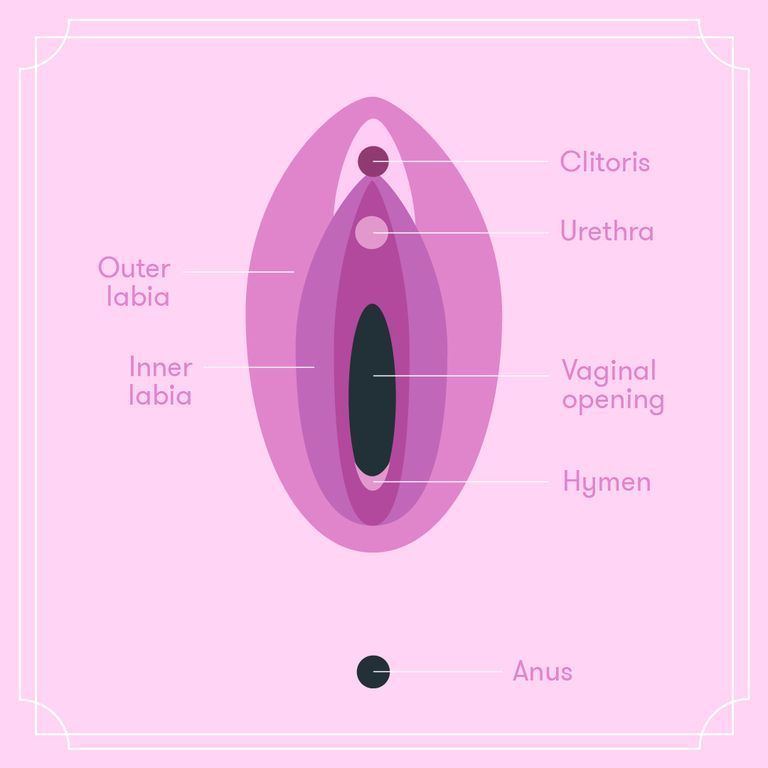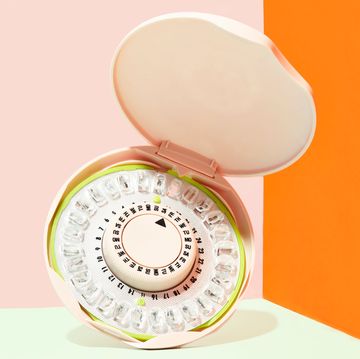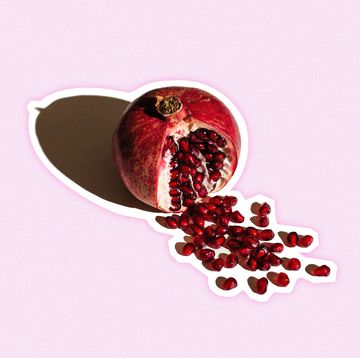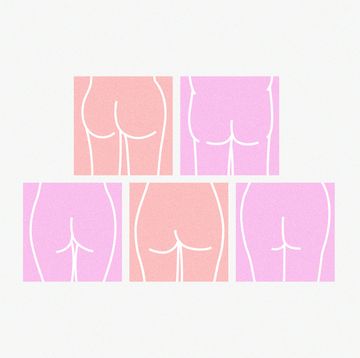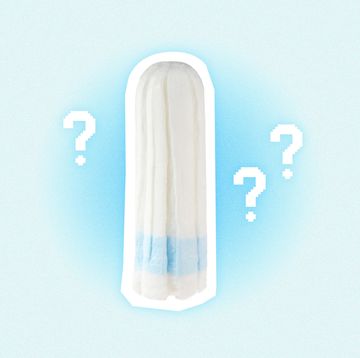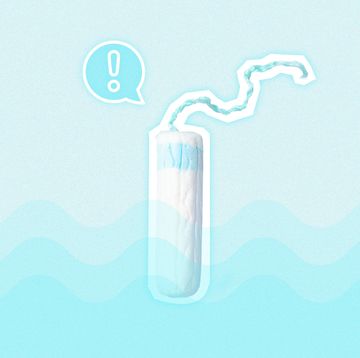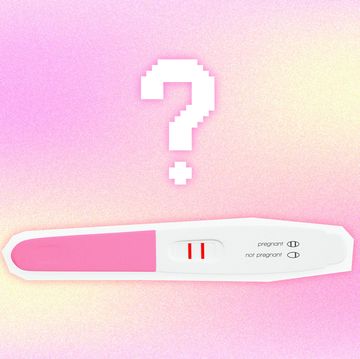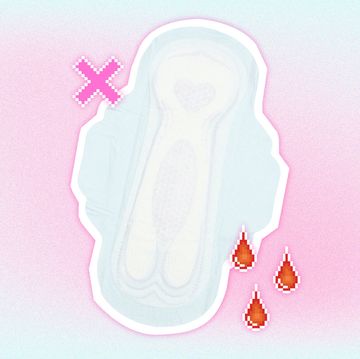As you go through puberty, it’s normal to have questions about perhaps some of the lesser-known areas of your body, such as your vagina. The changes you experience, or the discussions you have with your friends, may lead you to wonder, is my vagina normal? Well the short answer is, yes, your vagina is most likely normal. But before we begin, let’s clear some things up. First, vaginas come in all different shapes, sizes, and colors, and these are all considered normal. Second, it’s a very common misconception that everything “down there” is called your vagina, but what you’re calling your vagina is actually your vulva.
According to Dr. Melisa Holmes, a pediatric and adolescent gynecologist at Greenville Health System and the co-founder of non-profit teen sex ed organization Girlology, the vagina is simply the canal that connects your uterus and cervix to the “outside world.” That means that everything you see from the outside — inner and outer labia (lips), clitoris, vaginal opening, and urethra — is the vulva.
Again, all variations of vulvas are considered normal, so chances are, your vulva is totally fine. But if you still have questions (and we totally understand why you would), we’re here to help. Below, we talked to Dr. Holmes about some fascinating features of the vagina, including vaginal discharge, bumps, and all the different shapes, sizes, and colors vaginas can be.
Is vaginal discharge normal?
Yes! Vaginal discharge is completely normal — it’s how your vagina maintains its healthy, clean, and balanced environment. However, there are some types of vaginal discharge that might signal that there’s something wrong down there.
Dr. Holmes explains that while vaginal discharge is almost always normal, what’s not normal is if the color or odor has changed, or if you’re itching or burning. Normal vaginal discharge is white to yellow, and can be more yellow when it’s dry. If your discharge is green or dark yellow, you should probably see your healthcare provider or call up your OB/GYN. And while brown discharge before or after your period is normal, if it’s happening frequently, you should get it checked.
As for vaginal odor, a strong, fishy smell is a reason for concern. This could be a sign of an infection like bacterial vaginosis, which is a condition caused by a build-up of bacteria, according to the Centers for Disease Control and Prevention. But Dr. Holmes reassures us that “everybody has a bit of an odor around their vulva that’s musty and sweat-like.” So don’t feel worried or self-conscious if you have a natural odor. “We have a ton of sweat glands in our groin and wherever our pubic hair should be growing, so it’s natural,” she says.
Are the size and shape of my labia normal?
Vulvas come in a tremendous variety of shapes, sizes, and physical features. But if you’re worried at all, Dr. Holmes recommends that you ask your doctor mostly for reassurance.
According to Dr. Holmes, unease about your vulva’s appearance usually comes about right after puberty, because that's when they grow and change in appearance. “When you’re born, you have labia majora [outer lips], clitoris, and labia minora (the smaller lips on the inside),” she says. “From birth until puberty, the labia minora are tiny and barely even there, but at puberty, a girl starts releasing hormones. That’s when the labia minora grow, so they can get longer, darker in color, and wrinkly.”
Going through these physical changes is natural and expected, and just because your vagina may look different than it used to, that doesn’t mean there’s anything wrong with it. The only reason you should be worried? According to Dr. Holmes, you should schedule an appointment with your OB/GYN “if your labia minora protrude a long way from your vulva, and get chafed, swollen, red, or irritated.”
Is the color of my vagina normal?
“There is no color that ever worries me, unless there’s a mole, where there’s a small area of discoloration,” Dr. Holmes explains.
The color inside the labia majora and the rest of the inner vulva can take on any skin tone. It can vary from pink to various shades of brown. But if there’s a mole on the vulva, you should have your doctor take a look and monitor it over time. Most of the time, moles are nothing to worry about, according to Dr. Holmes. “We don’t remove them, but we do keep an eye on them,” she says. “If they change in color or the borders change, just like with any mole, we would consider removing.”
Are bumps normal?
Bumps can be a normal reaction to shaving. Dr. Holmes explains that when young girls notice bumps or irritation around the vulva, they assume they have a yeast infection. However, upon examination, it’s usually a razor rash, infected hair follicles, or lumps as a result of shaving around your vagina.
How can you prevent this irritation? Dr. Holmes recommends leaving at least a little bit of hair around the vaginal opening, when shaving or waxing your vulva. “The hair helps protect your vulva from bacterial infection, and helps absorb some of the discharge so it doesn’t sit on your skin or cause irritation,” she says.
But sometimes, the appearance of bumps can be a cause for concern. If you have bumps that are painful or getting larger, or you see a blister or ulcer down there, you should definitely pay your gyno a visit. According to Dr. Holmes, these types of bumps could mean a few things: abscesses (infections from an infected hair follicle), Bartholin’s glands (blocked glands), or sexually transmitted infections (STIs), which are all issues you should get checked out ASAP.
The bottom line? If something doesn’t feel right down there, you should see your gyno. Dr. Holmes’ best advice is to familiarize yourself with your anatomy and know that there is a super wide variation of what’s considered normal.
Yerin Kim is the Assistant Editor for Snapchat Discover at Seventeen, covering beauty, sex & health, lifestyle, and entertainment. Originally from New Jersey but raised in Seoul, she is a proud Syracuse grad who loves fluffy puppies and a good Instagram opp. Follow her on Twitter and Instagram!
Leah Campano is an Associate Editor at Seventeen, where she covers pop culture, entertainment news, health, and politics. On the weekends, you can probably find her watching marathons of vintage Real Housewives episodes or searching for New York City’s best almond croissants.

